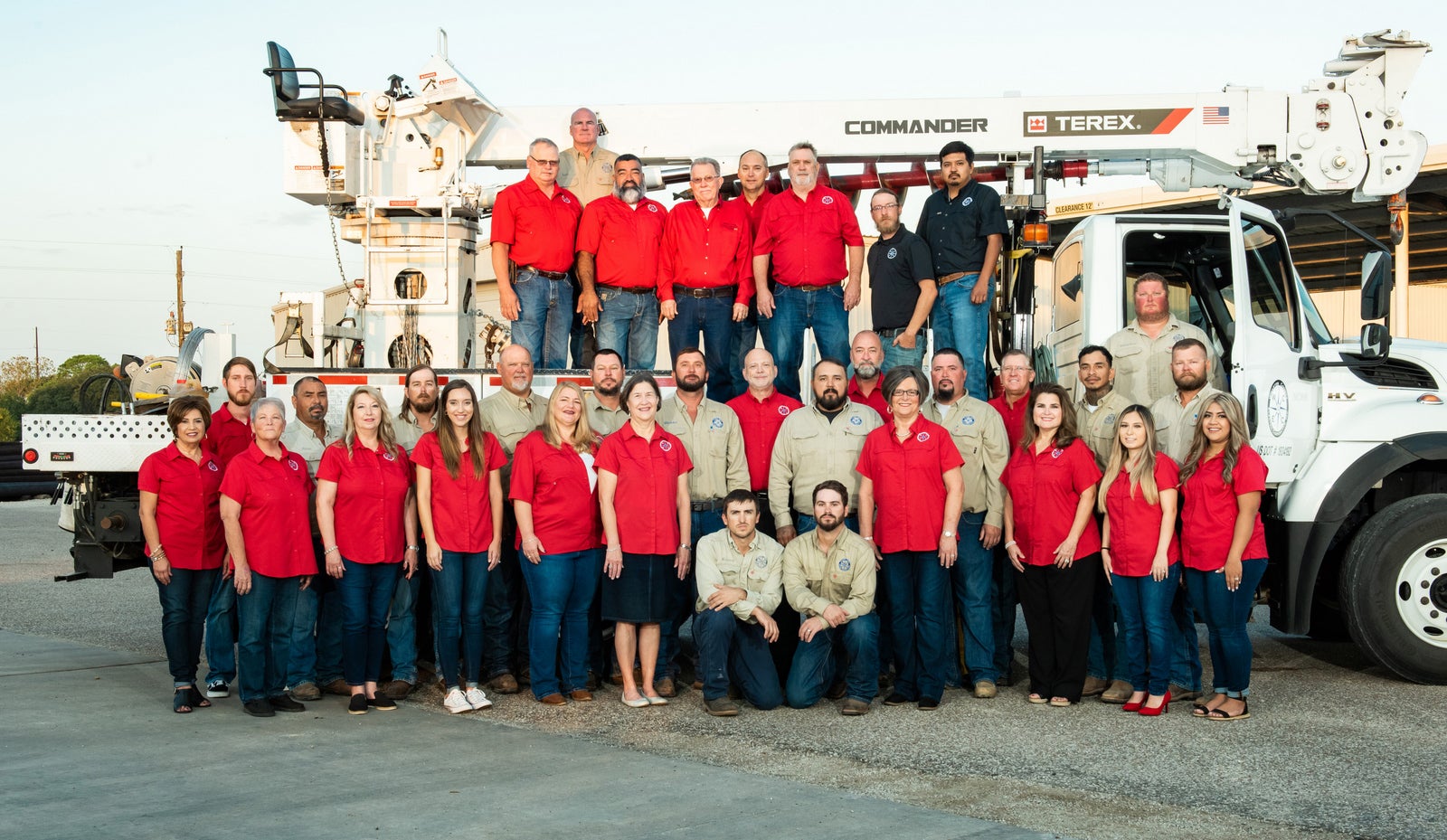WCEC History
In February of 1938, R.E. Meek, H.D. Madsen, A.E. Schoeneberg, J.B. Putman, A.E. Berndt, Alfred N. Nilson, and Victor T. Jurasek met in the Wharton law office of Edwin Hawes, Jr. and adopted the Articles of Incorporation for Wharton County Electric Cooperative, Inc. They made an application to the State of Texas for a Charter. The charter was granted later that month, and WCEC was born!
The Beginning
The history of Wharton County Electric Cooperative is rich with examples of the cooperative spirit at work. Each rural electric system has its own story of the first lines extended, the first poles set in place, the first electric power surging into the homes of its rural consumers. Many still recall with sentiment, “the day the lights came on” . . . the awe that they felt, the absolute amazement of this new force that would revolutionize their world!
Rural electrification has indeed changed the face of rural America. Prior to 1935, only three percent (3%) of the farms in Texas had electric service and these were in most cases in suburban areas on the edge of cities and towns.
The movement to secure rural electric service in Wharton County and adjacent areas began in the latter part of 1937 at a farm meeting in the Danevang Community Hall. At this meeting, the first Rural Electric Administration (REA) bulletin explaining the method of organizing a rural electric cooperative and how to construct a rural electric system was read. J. B. Putman, who lived northwest of El Campo had secured this bulletin.
In early 1938, a committee consisting of the following gentlemen: R. E. Meek, H. D. Madsen, A. E. Schoeneberg, J. B. Putman, A. E. Berndt, Alfred N. Nilson, and Victor T. Jurasek, met in the law office of Edwin Hawes, Jr., in Wharton and adopted Articles of Incorporation for Wharton County Electric Cooperative. An application was made to the State of Texas for a charter. This was granted in February 1938. On March 18, 1938, the first official meeting of the incorporators of Wharton County Electric Cooperative was held in El Campo at the office of E.G. Petersen.
Rural electrification has indeed changed the face of rural America. Prior to 1935, only three percent (3%) of the farms in Texas had electric service and these were in most cases in suburban areas on the edge of cities and towns.
The movement to secure rural electric service in Wharton County and adjacent areas began in the latter part of 1937 at a farm meeting in the Danevang Community Hall. At this meeting, the first Rural Electric Administration (REA) bulletin explaining the method of organizing a rural electric cooperative and how to construct a rural electric system was read. J. B. Putman, who lived northwest of El Campo had secured this bulletin.
In early 1938, a committee consisting of the following gentlemen: R. E. Meek, H. D. Madsen, A. E. Schoeneberg, J. B. Putman, A. E. Berndt, Alfred N. Nilson, and Victor T. Jurasek, met in the law office of Edwin Hawes, Jr., in Wharton and adopted Articles of Incorporation for Wharton County Electric Cooperative. An application was made to the State of Texas for a charter. This was granted in February 1938. On March 18, 1938, the first official meeting of the incorporators of Wharton County Electric Cooperative was held in El Campo at the office of E.G. Petersen.
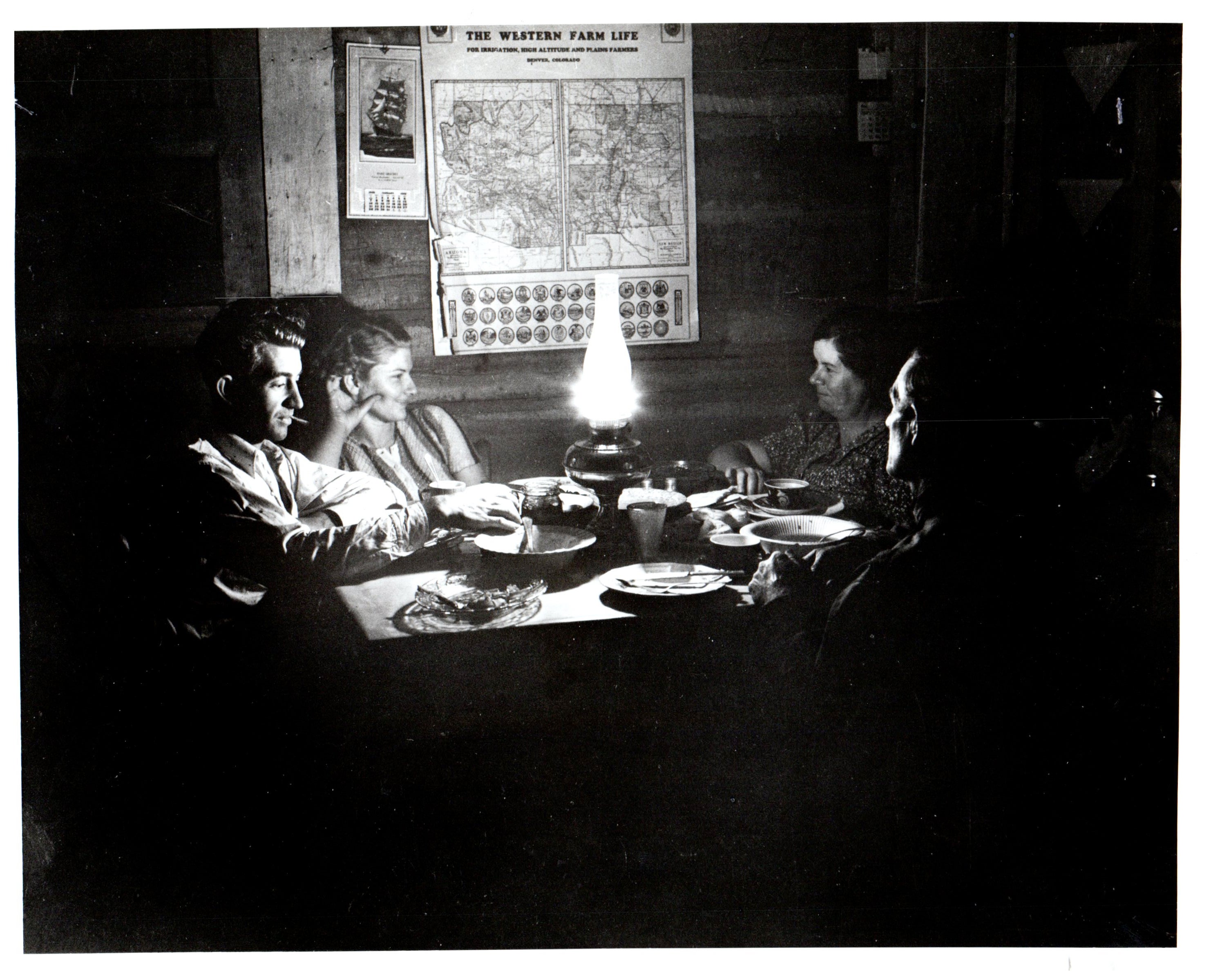
The War Years
After a year of hard work, a loan of $162,000 was made by REA for the construction of the “A” section. The lines were first energized on July 24, 1939.
During the early 1940s, almost all activity on power line construction drew to a halt due to World War II.
However, WCEC was not idle during the war years. They helped to organize a Cooperative Community Canning Kitchen in El Campo and spearheaded a successful scrap metal drive. WCEC actually collected over a million pounds of scrap metal, which amounted to more than one ton per member!
During the early 1940s, almost all activity on power line construction drew to a halt due to World War II.
However, WCEC was not idle during the war years. They helped to organize a Cooperative Community Canning Kitchen in El Campo and spearheaded a successful scrap metal drive. WCEC actually collected over a million pounds of scrap metal, which amounted to more than one ton per member!
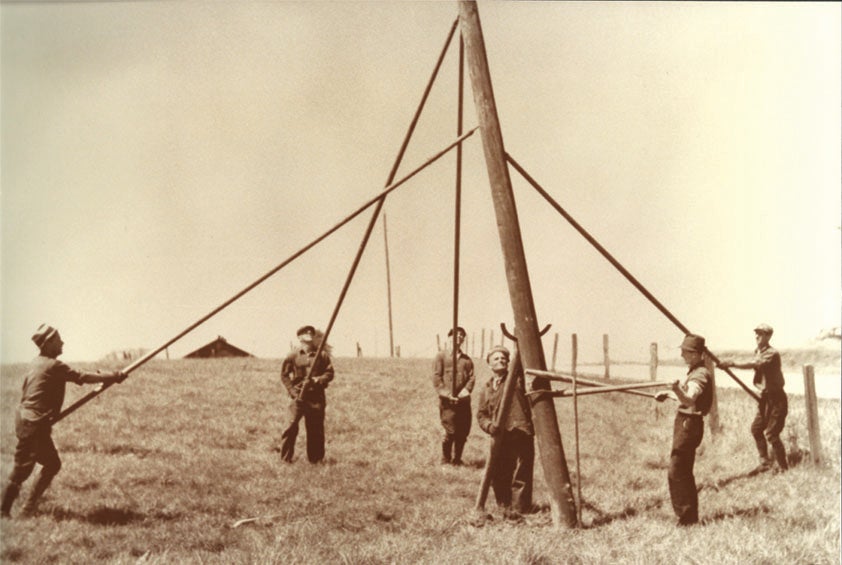
Continued Growth
During the 40s and 50s, WCEC continued to grow and was almost constantly in conflict with the investor utility companies (IOUs) for serving customers. This placed them in a position of having to buy wholesale power from their competitor. It became obvious in the early 1960s that this was not a good arrangement.
The South Texas Electric Cooperative (STEC) was formed to provide generating and transmission services to six south Texas cooperatives including Wharton County Electric Cooperative. Service began in 1962.
The South Texas Electric Cooperative (STEC) was formed to provide generating and transmission services to six south Texas cooperatives including Wharton County Electric Cooperative. Service began in 1962.
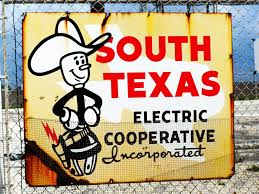
Moving On Up
First headquartered on East Jackson Street in a small white frame structure next to the present Lively Associates Building, WCEC personnel made two moves before settling in its present site on Highway 59 East. Coming from the old Green Castle, WCEC celebrated with an Open House in 1971 when it moved into its new headquarters.
Also, in 1964, WCEC began providing security lights for members at a low cost. This was a welcome sight and the countryside has been lighted since that time.
Also, in 1964, WCEC began providing security lights for members at a low cost. This was a welcome sight and the countryside has been lighted since that time.
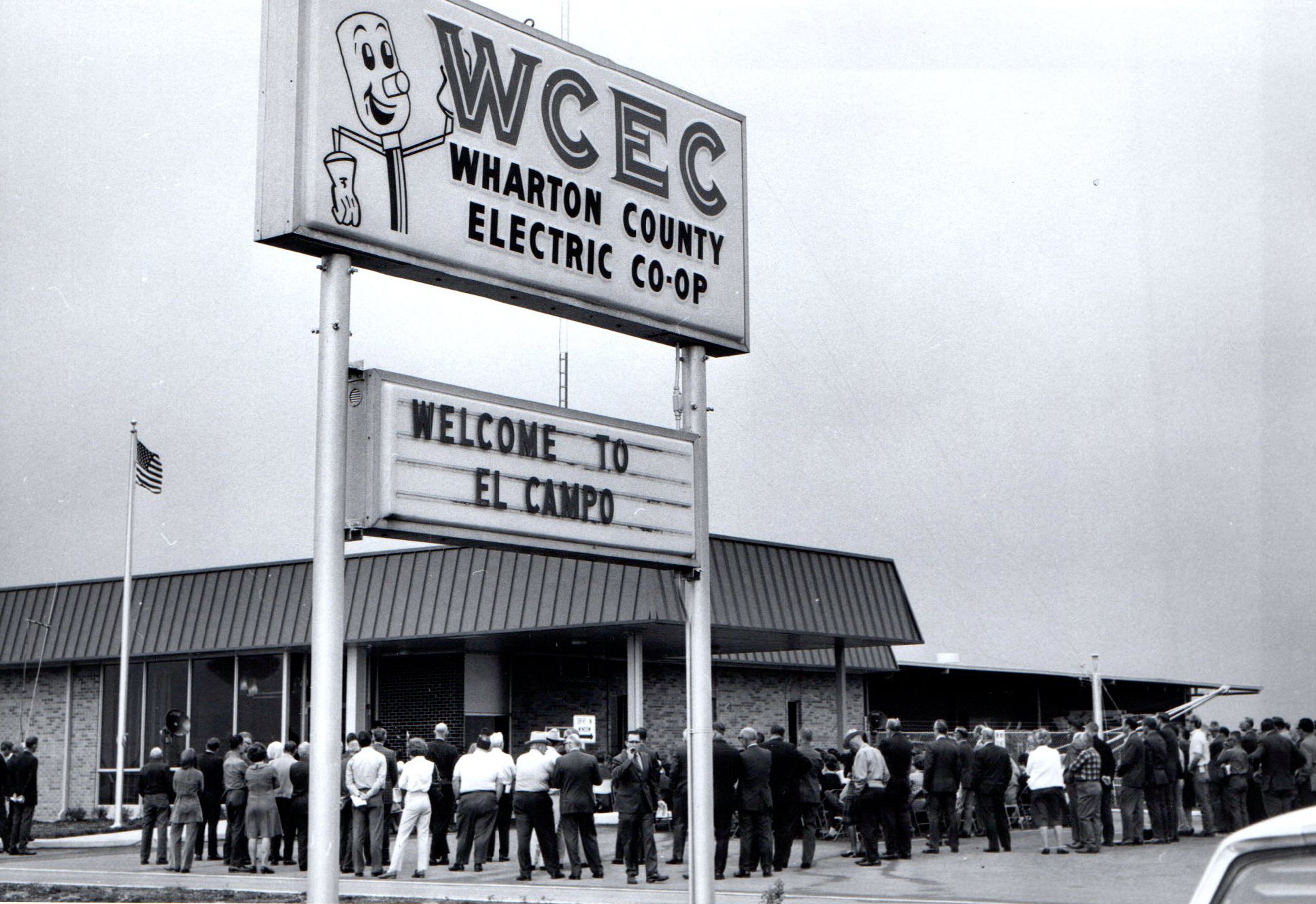
Adding Power
In 1977, twenty-six electric cooperatives extending through the center of Texas from the Red River to the Gulf of Mexico had the foresight to form the San Miguel Electric Cooperative (SMEC) for the purpose of building a 400-megawatt generating plant south of San Antonio to burn low-grade lignite. This project was completed in 1982 and has been a tremendous success.
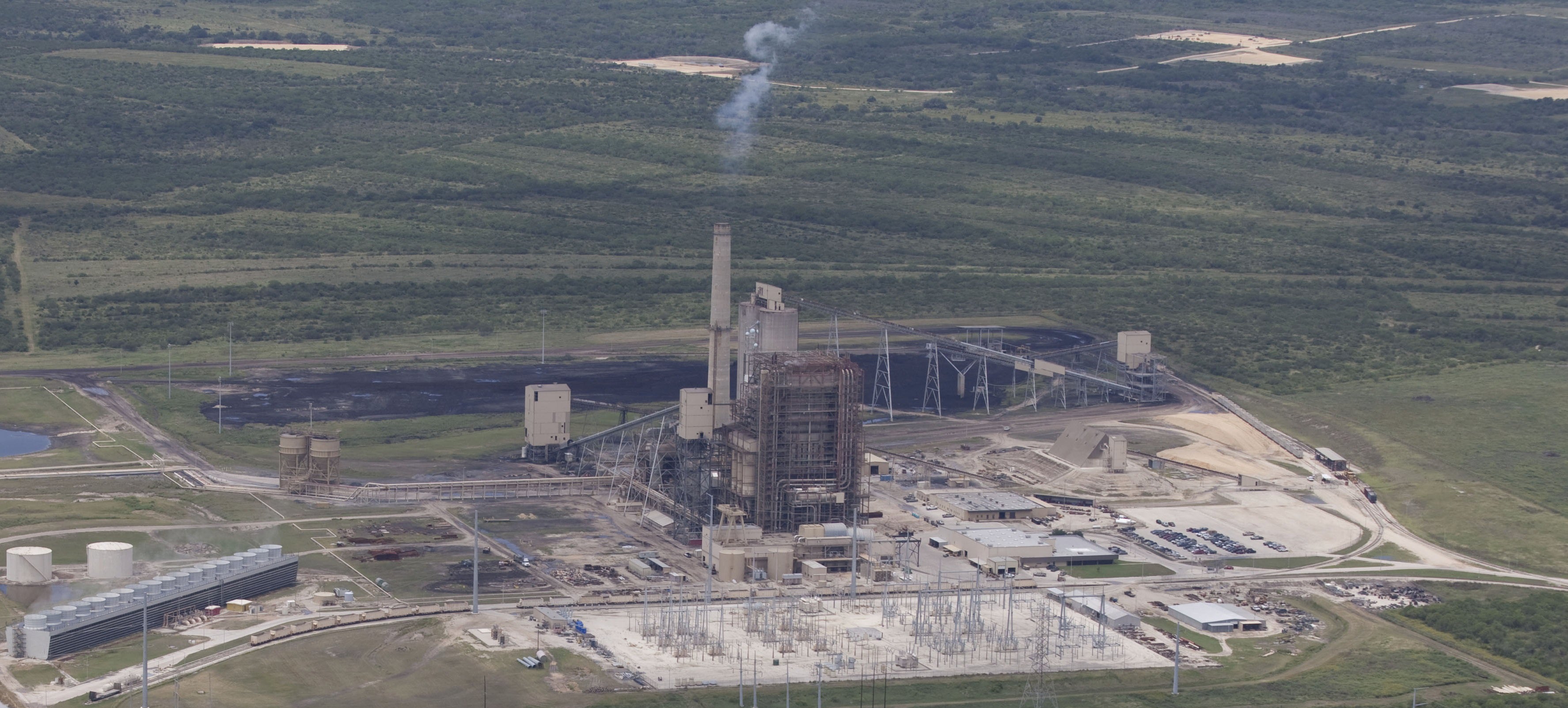
Strategic Planning
The board began strategic planning in 1989 and following several detailed sessions by employees, management and the board of directors, the Cooperative’s philosophy was stated in the following mission statement: “The Mission of Wharton County Electric Cooperative, Inc. is to provide economical and reliable electric energy service to our members and to provide products, services, and leadership that will have a positive influence on the economy of the area that we serve.”
Long-Range Planning
In 1995, after three years of long-range financial studies by in-house staff, CFC, CoBank, and rate consultants, the board of directors bought out its REA mortgage. The $4.3 million REA debt was paid off at its discounted present value of $3.4 million, which was an $884,878 discount.
In 2006, WCEC began offering Wirehand Wireless Internet service to meet the need for broadband service in rural areas.
In 2006, WCEC began offering Wirehand Wireless Internet service to meet the need for broadband service in rural areas.
Today
Today, Wharton County Electric Cooperative employs 39 staff members. General Manager/CEO Gary Raybon leads the current WCEC Home Team.
Throughout the years, many individuals contributed unselfishly of their time and talents toward the success of WCEC. Many were pioneers of rural electrification in our community and took on a job that many said could not be done.
Well . . . they did it! And, the legacy which they created and the sound foundation on which Wharton County Electric Cooperative is built will continue into the future.
Throughout the years, many individuals contributed unselfishly of their time and talents toward the success of WCEC. Many were pioneers of rural electrification in our community and took on a job that many said could not be done.
Well . . . they did it! And, the legacy which they created and the sound foundation on which Wharton County Electric Cooperative is built will continue into the future.
